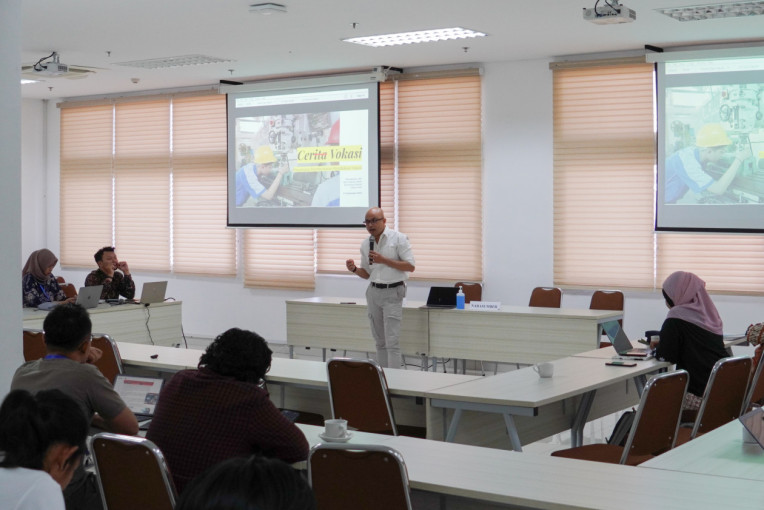
Media plays a significant role in connecting higher education institutions with the public. Information and research produced in academia need to be disseminated to the public. Unfortunately, this information has not received adequate coverage in the media.
This issue was the key point of the discussion at “INOVOKASIA Bootcamp Media,” hosted by the UGM Vocational College (SV UGM) on Wednesday, Sept. 11, 2024, at the Teaching Industry Learning Center (TILC) Building.
Dr. Wiryanta, Vice Dean for Research and Community Service, stated that the media can enhance educational institutions’ role.
He emphasized that vocational schools need media support to bridge the gap between campuses and society.
Vocational education is crucial in advancing the nation with skilled and competent human resources ready for work.
“The percentage of vocational education in Indonesia is still around 8-10%, whereas to become a developed country, we need a stronger vocational education system. I believe the media plays a significant role in promoting vocational education to the public,” he explained.
Dr. Wiryanta noted that vocational schools contribute 40-50% to national progress in China and South Korea.
China currently has 5,000 vocational schools, showcasing the impact of vocational education on national development.
On the other hand, today’s media faces significant challenges due to digital disruption.
Traditional media must compete with the speed of information on social media channels, resulting in important information buried under more popular topics.
This issue has also affected media interest in covering activities at educational institutions, including vocational education.
Mufti Nurlatifah, a Communication lecturer at UGM, highlighted a gap between the media and educational institutions.
“When discussing interesting news, students often engage in unique activities. There is a lack of collaboration,” she explained.
The media tends to focus more on covering campus events or ceremonial activities, while compelling stories about the campus often receive little attention.
Therefore, collaboration between the media and educational institutions can enhance their societal roles and open up opportunities for academic development.
Nurlatifah stated that innovations and creations from campuses have the potential to attract industry collaboration.
Alumni’s success stories can also bridge the gap between industry and higher education.
According to her, the media can help students become better known in society and industry.
The narratives constructed by the media in the education sector usually cover educational quality, collaborations, alumni success, and more.
Behind this, however, lies a wealth of information that could make for exciting news, such as campus technological innovations, student achievements, and collaborations with partner campuses.
“I believe we need a strong relationship with the media to package campus activities into engaging information,” she said.
In line with this, Qaris Tajudin, Director of the Tempo Institute, mentioned the media’s challenges in conveying information to the public.
The world is experiencing an information flood, with abundant information being disseminated but lacking filtering.
News that may be deemed necessary often competes with public interest, and the media must also compete to meet these interests.
“Media colleagues can help filter which news is worth covering. Therefore, further collaboration is essential,” he stated.
Tajudin added that the media needs access to information from educational institutions to sharpen their news coverage.
Thus, it is essential to position the media as a partner rather than just a collaborator in publications.
The media boot camp was also held at SV UGM as part of a series of events celebrating the school’s anniversary.
Sustainable advancement in vocational education can be achieved through collaboration between the media and educational institutions.
Author: Tasya
Editor: Gusti Grehenson
Post-editor: Lintang

